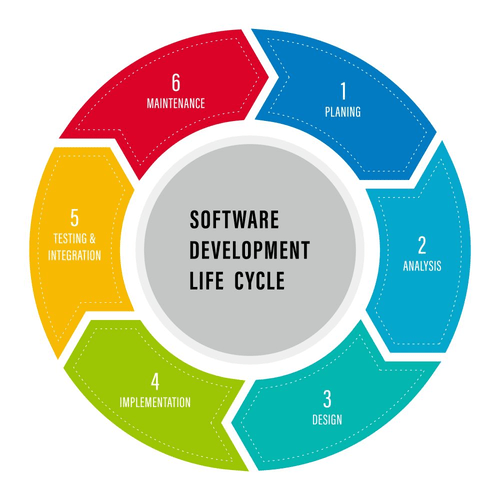It’s possible for testing to be repeated, specifically to check for bugs, interoperability, and errors. In the first phase, the team determines whether or not there’s a need for a new system to reach the strategic objectives of a business. This is a feasibility study or preliminary plan for the company to acquire any resources necessary to improve a service or build on specific infrastructure. The System Development Life Cycle (SDLC) provides a well-structured framework that gives an idea, of how to build a system. It consists of steps as follows- Plan, Analyze, Design, Develop, Implement and Maintain.
- The gathered information serves as a basis for designing a system that meets users’ expectations and addresses organizational challenges.
- During the Implementation phase, programmers would be assigned to write the specific programs using a programming language decided by the System Analyst.
- Penetration testing – Penetration testing analysis helps you find and fix exploitable vulnerabilities in your server-side applications and APIs.
- They will be responsible for determining if the proposed design reaches the initial business goals set by the company.
- Books such as David Avison and Guy Fitzgerald’s Information Systems Development and Alan Daniels and Don Yeates’ Basic Systems Analysis, delve into the intricacies of information systems development lifecycles.
In RAD, the development evolution is continuous and flexible to suit changing business needs, which is a must in today’s modern environment. In the design phase, project members define the structure of project components as well as key elements of the system by defining the interfaces that will exchange data within the workflow. It’s very common for the project teams to use UML diagrams in the design phase to design the system’s architecture. The SDLC phases are designed in a way that progressively develops or alters a system across its life cycle. If followed through from beginning to end, the SDLC will help deploy a fully-operational, high-quality system that meets and/or exceeds client requirements, all within the specified time and budget constraints. In general, SDLC is a closed loop in which each stage affects the actions in subsequent ones and provides clear information for future stages.
Attributes of a Systems Analyst
Having a system development life cycle is essential as it serves as a platform to transform an idea into a functional and fully-operational system. System Design is a critical stage in the SDLC, where the requirements gathered during the Analysis phase are translated into a detailed technical plan. It involves designing the system’s architecture, database structure, and user interface, https://www.globalcloudteam.com/ and defining system components. The Design stage lays the foundation for the subsequent development and implementation phases. The new seven phases of SDLC include planning, analysis, design, development, testing, implementation, and maintenance. It’s linear and straightforward and requires development teams to finish one phase of the project completely before moving on to the next.
Alleviating software development complexity is chief among the key best practices for developing software. To that end, using the SDLC process goes a long way in compartmentalizing and breaking down robust tasks, into smaller, more manageable tasks that are easier to measure and achieve. Thanks to its framework of structured phases, those involved in the SDLC can help shape the project and manage it in a more streamlined fashion. Since the product is created feature by feature, programmers can easily make changes to a
system operation if necessary.
Resources created by teachers for teachers
With web application security add an extra layer of protection to your application and stop DDoS attacks and data breaches before they even occur. All three of these methods are popular since they allow for extensive iteration and bug testing before a product is integrated with greater source code or delivered to market. SDLCs can also be more specifically used by systems analysts as they develop and later implement a new information system. T’s important that the software overall ends up meeting the quality standards that were previously defined in the SRS document.

Due to this, the waterfall methodology fits
well short-term projects which have clear user requirements. However, today, it is a well-understood fact that security cannot be an afterthought and must be baked in as soon as the project receives the green light. CTOs know that vulnerabilities can be discovered and mitigated incrementally by incorporating security practices early in the software development lifecycle, making more room for cost savings. Emerging systems development life cycle as a cult industry practice, it talks about establishing a predictable and iterative process for each stage of software development. And, as noises around integrating security earlier in system development lifecycle phases grow louder, SDLC is here to rock the boat, one wave at a time. However, unlike traditional software development that addresses security as a separate stage, SDLC addresses security every step of the way through DevSecOps practices.
Life Cycle of System Analysis and Design
Choosing the right SDLC methodology for your software development project requires careful thought. But keep in mind that a model for planning and guiding your project is only one ingredient for success. Even more important is assembling a solid team of skilled talent committed to moving the project forward through every unexpected challenge or setback.

This model prioritizes flexibility, adaptability, collaboration, communication, and quality while promoting early and continuous delivery. Ultimately, all this ensures that the final product meets customer needs and can quickly respond to market demands. Each SDLC model offers a unique process for your team’s various project challenges. The project’s specifications and intended results significantly influence which model to use. For example, the waterfall model works best for projects where your team has no or limited access to customers to provide constant feedback. However, the Agile model’s flexibility is preferred for complex projects with constantly changing requirements.
What is a system development life cycle?
Once the product is ready to go, it’s time to make it available to its end users and deploy it to the production environment. Developers will typically use multiple tools, programming environments, and languages (C++, PHP, Python, and others), all of which will comply with the project specifications and requirements outlined in the SRS document. In the seventh and final phase, end users can fine-tune the completed system as necessary if they want to improve performance.
The synchronize and stabilize method combines the advantages of the spiral model with technology for overseeing and managing source code. This approach was defined by David Yoffie of Harvard University and Michael Cusumano of MIT. They studied how Microsoft Corp. developed Internet Explorer and Netscape Communications Corp. developed Communicator, finding common threads in the ways the two companies worked. For example, both companies did a nightly compilation (called a build) of the entire project, bringing together all the current components. They established release dates and expended considerable effort to stabilize the code before it was released.
How can DevSecOps be integrated into SDLC?
The ultimate result of this stage should be a working solution along with
source code documentation. The design phase of a system development life cycle is all about visualization. A system
architect describes how all product components will interact with each other, defines
security levels, and outlines the way the data will be transmitted. At the same time, UI and
UX designers translate a product idea into schemes, layouts, and wireframes. In general, the
system design phase is the first important milestone in a software development process since
it marks a transition from theory to tangible deliverables.

Faculty, staff, and student employees who violate this University policy may be subject to disciplinary action for misconduct and/or performance based on the administrative process appropriate to their employment. Testers typically use both black and white box testing, and take an active role when writing QA automation scripts with developers. In our book, and we might be a little biased, Agile is the methodology that developers favor the most out of all the methodologies out there.
How to choose the SDLC model?
One thing to note about the v-model is that no phase can start until the previous one is completed including a corresponding testing exercise. When you hear the word prototype, if you’re like us, your mind wanders off to miniature airplanes or cars that we sometimes referred to as prototypes. Our consultants will help you to supplement your team or build a high-quality mobile/web app
from scratch. Get expert engineers to supplement your team or build a high-quality app from scratch and bring
it to life. Software innovation is advancing at warp speed and transforming the dynamics of the business landscape as we speak.
